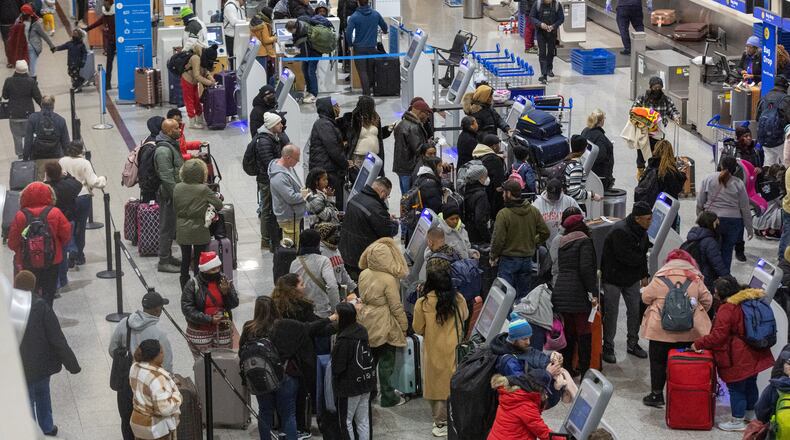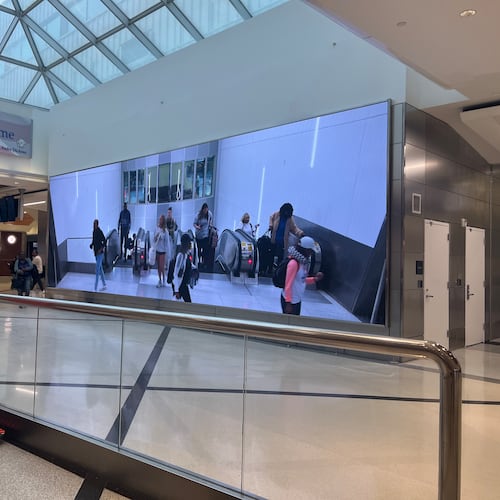Flight delays and cancellations plagued air travel in 2022 as airlines struggled to staff up for the sharp rebound in travel, as shown in a round-up of airline performance figures released this week.
Atlanta-based Delta Air Lines struggled through mass cancellations due to staffing issues last summer and other peak periods of the year. Overall, Delta ended up canceling 2% of its flights in 2022, according to federal data.
That’s nearly four times its cancellation rate of less than 0.6% in 2021.
Delta CEO Ed Bastian in remarks this week called 2022 “the most difficult and challenging environment in U.S. aviation history, as we tried to bring the airline systems back up against unprecedented demand.”
“Our resources clearly were not in position to be able to satisfy that large amount of demand,” he said.
And if it seemed like flights everywhere were getting canceled more often, it’s true.
According to the data released by the U.S. Department of Transportation’s Bureau of Transportation Statistics, all of the airlines ranked had worse cancellation rates in 2022 than in 2021.
Other major airlines besides Delta also performed poorly, posting cancellation rates of 2.7% at United Airlines, 2.8% at American Airlines and nearly 3.3% at Southwest Airlines in 2022. Overall the airline industry cancellation rate was 2.7%.
The last month of the year was particularly bad, when airlines canceled 5.4% of their scheduled domestic flights during the hectic holiday rush.
More than half of the cancellations industry-wide were flights that were supposed to be operated by Southwest, which suffered a meltdown of its operations as snowstorms hit large swaths of the U.S.
Dallas-based Southwest, the second-largest carrier in Atlanta, halted most of its flights for days right in the middle of the holiday travel season. Icy weather hobbled its flight schedule and left crews stranded and out-of-place around the country — exacerbated by sluggish scheduling technology that could not keep up with the demands.
Southwest this week announced plans to address the issues that caused the problems, saying it will buy more deicing equipment, invest in technology and reorganize some teams for better coordination.
Airlines’ on-time performance also suffered last year. Overall, airlines posted an on-time arrival rate of 76.7% in 2022, down from about 81% in 2021 and 79% in pre-pandemic 2019.
The figures for 2022 mean nearly 1 out of 4 flights were late last year.
Delta still ended up as the top-performing airline for on-time performance with 82.1% of its flights arriving on time.
Bastian called Delta’s top ranking for on-time performance “quite a statement in the most difficult period ever. ... That’s really driven by our people and their operational excellence.”
In the No. 2 spot was Alaska Airlines, with 79% of its flights arriving on time, followed by United Airlines in third at 78.7% of flights arriving on time. The on-time rates include their regional carriers’ operations. Southwest, in 6th place, had a 73.2% on-time performance rate.
The worst performing airlines for on-time performance were Frontier Airlines, with 66.1% of flights on time, JetBlue at 64.6% on time and Allegiant at 63.4% on time.
Most airlines also did worse on baggage handling in 2022 than the previous year, posting an overall mishandled baggage rate of 0.64% in 2022. That’s a higher rate of mishandled bags than the 0.59% in 2019.
Flight delays and cancellations tend to result in more delayed and lost baggage, as bags get separated from their owners and end up in the wrong place.
The Latest
Featured




